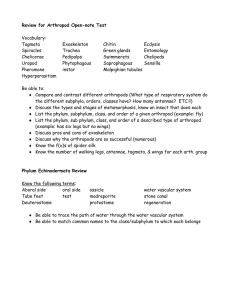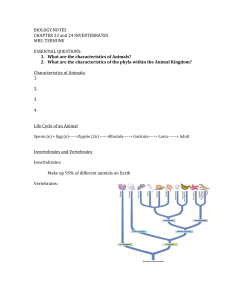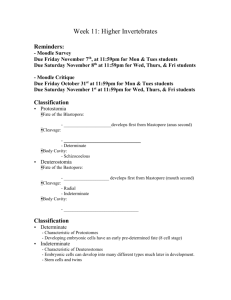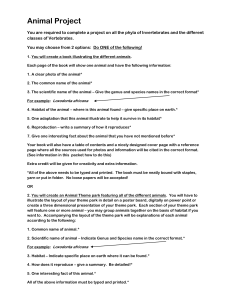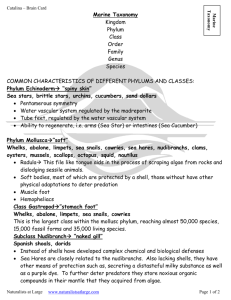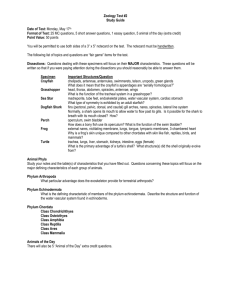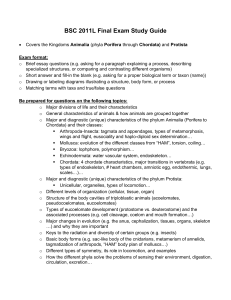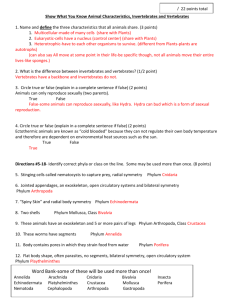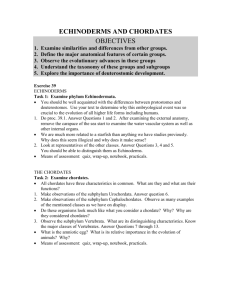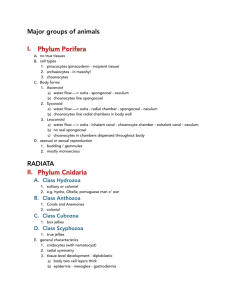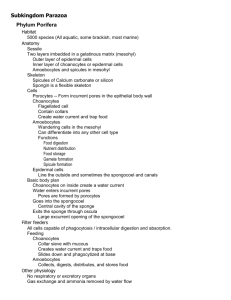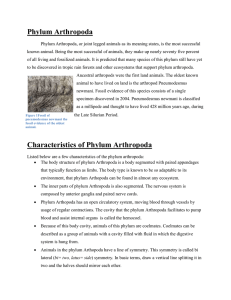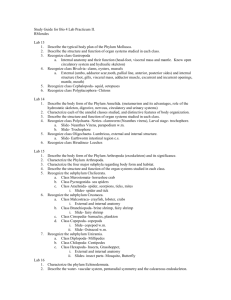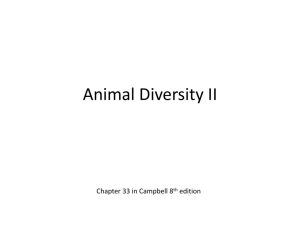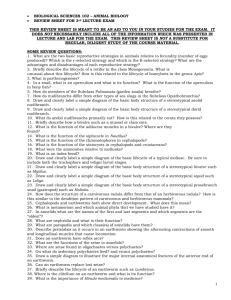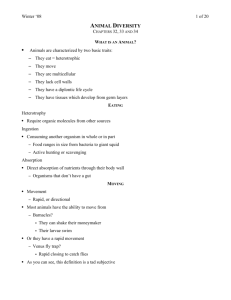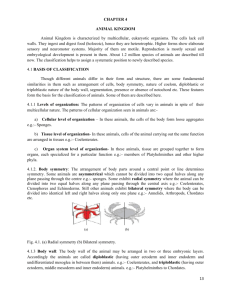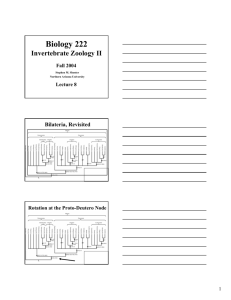Question Sheet 1. Identify the unifying characteristics of molluscs 2
advertisement
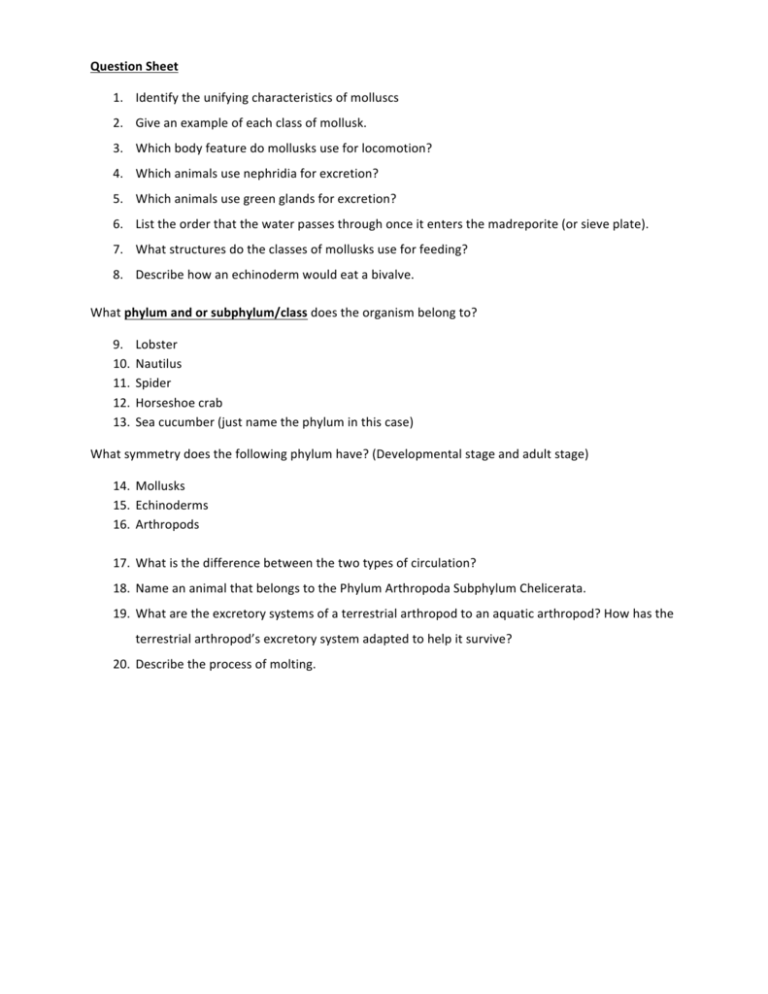
Question Sheet 1. Identify the unifying characteristics of molluscs 2. Give an example of each class of mollusk. 3. Which body feature do mollusks use for locomotion? 4. Which animals use nephridia for excretion? 5. Which animals use green glands for excretion? 6. List the order that the water passes through once it enters the madreporite (or sieve plate). 7. What structures do the classes of mollusks use for feeding? 8. Describe how an echinoderm would eat a bivalve. What phylum and or subphylum/class does the organism belong to? 9. 10. 11. 12. 13. Lobster Nautilus Spider Horseshoe crab Sea cucumber (just name the phylum in this case) What symmetry does the following phylum have? (Developmental stage and adult stage) 14. Mollusks 15. Echinoderms 16. Arthropods 17. What is the difference between the two types of circulation? 18. Name an animal that belongs to the Phylum Arthropoda Subphylum Chelicerata. 19. What are the excretory systems of a terrestrial arthropod to an aquatic arthropod? How has the terrestrial arthropod’s excretory system adapted to help it survive? 20. Describe the process of molting. Answer Sheet 1. Foot, mantle, visceral mass, shell 2. Bivalve: clam, mussle, oyster Gastropod: snail, slug cephalopod: octopus, nautilus, squid 3. Foot (or modified food = tentacles/arms) 4. Mollusks 5. Aquatic arthropods 6. Madreporite/sieve plate à ring canal à radial canal à ampulla à tube feet 7. Class Bivalvia: gills Class Gastropoda: radula Class Cephalopoda: beak 8. Use arms to pry open shell Eviscerate stomach inside Digest bivalve inside its shell Pull stomach back inside Finish digestion in glands found in each arm 9. Phylum Arthropoda Subphylum Crustacea 10. Phylum Mollusca Class Cephalopoda 11. Phylum Arthropoda Subphylum Chelicerata 12. Phylum Arthropoda Subphylum Chelicerata 13. Phylum Echinodermata 14. Development: Bilateral Adult: (none) 15. Development: Bilateral Adult: Pentaradial /Pentamerous radial 16. Development: Bilateral Adult: Bilateral 17. Open: blood flows into spaces called sinuses Closed: blood travels in blood vessels 18. Horseshoe crab, spider, scorpion 19. Aquatic: green glands (excrete nitrogenous waste into water) Terrestrial: Malpighian tubules (reabsorbs water – helps animal conserve water to prevent dehydration) 20. New exoskeleton is made inside old one arthropod takes in water/air to swell up exoskeleton cracks and arthropod crawls out of old exoskeleton body remains swelled up while exoskeleton hardesn to allow arthropod room to grow into
